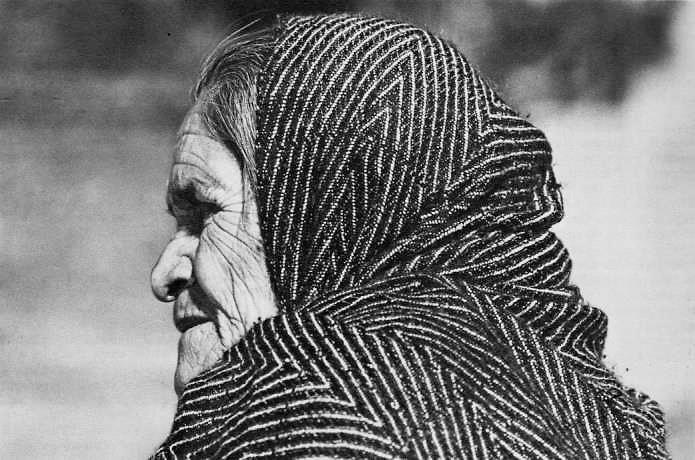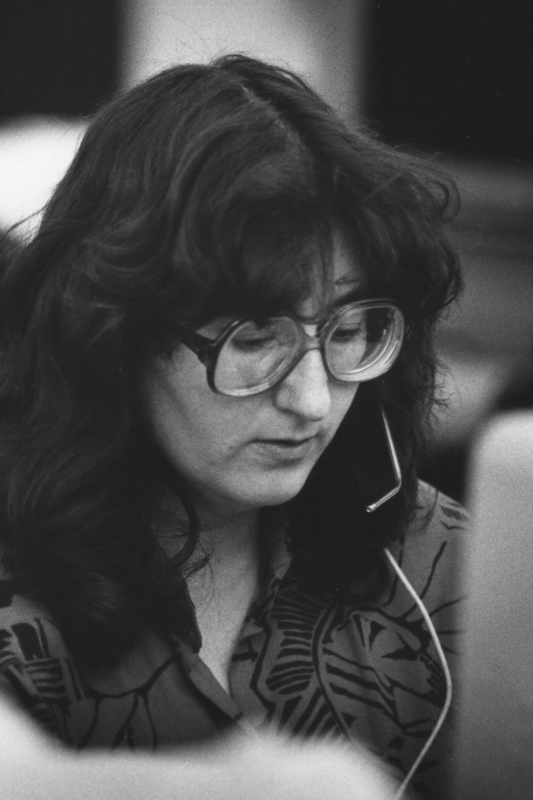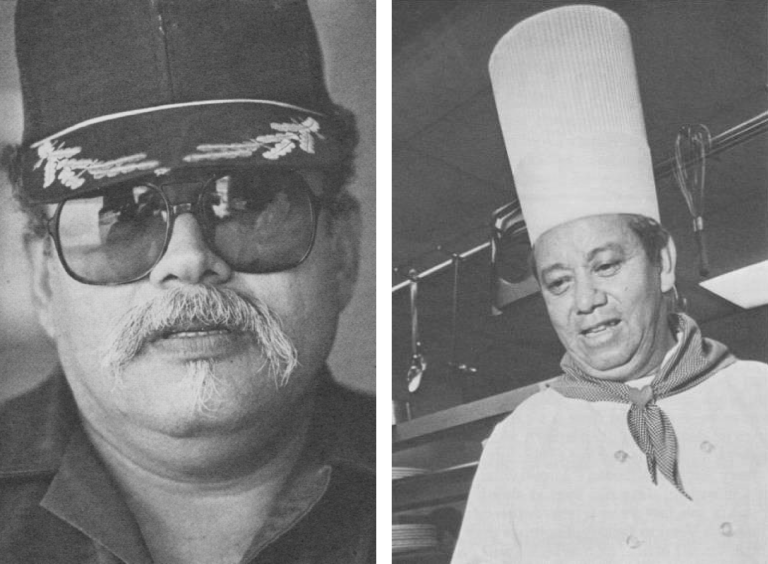(Continued)
A barrio neighborhood
In many of our articles, we wanted not only to inform but also to demystify and to debunk stereotypes. For example, the article on the Mexican American barrio of Boyle Heights was envisioned as a way to demonstrate everyday life in a working-class Latino neighborhood. Hundreds of thousands of Angelinos sped past the historic neighborhood each day on crowded L.A. freeways, but few nonresidents knew much about it.

Louis Sahagun was tapped to do that story. Every Latino series team member had a remarkable story about growing up and making it to one of the world’s best newspapers. Sahagun’s path to what is now a 35-year career as a reporter is especially noteworthy. He started work at the Times at a young age as a maintenance person sweeping floors around ancient linotype machines. “I had no dream or ambition of being a journalist at that time,” Sahagun recalled. But he got a job in the newsroom as a copy messenger and became intrigued by the excitement of the newsroom. He went back to college and started writing short book reviews for the Times. Later, he was accepted into the Summer Program for Minority Journalists at UC Berkeley, the program I had helped to start. (Virginia Escalante was also in that 1979 class, and Frank del Olmo was a co-director.)
Reporting the Boyle Heights story, Sahagun wore out plenty of shoe leather. He recalled: “I interviewed political leaders, city planners, historians, business leaders, law enforcement authorities, gang members, school officials and exemplary students in local high schools. I also examined thousands of pages of city documents and police statistics and conducted dozens of random man-on-the-street interviews.”
The LAPD statistics revealed a surprise. Boyle Heights and its surrounding neighborhoods in the Hollenbeck Division reported the fewest major crimes per capita of any of the city’s 18 police divisions. This drove a stake through the common perception of Boyle Heights as a dangerous place to live, with endless gang-related shootings. At the same time, the statistics did reveal a serious problem: a high number of narcotics-related arrests.

Boyle Heights had been an enclave for immigrants over the last 100-plus years. During various eras, it was the entry point for Russians, Jews, Japanese, Armenians, Italians and Chinese. But by 1960, it was primarily Mexican Americans and other Latinos who called it home.
“Thirty-five years of intense freeway construction eliminated 2,900 homes, displaced 10,000 people and left noise and air pollution in its wake,” Sahagun wrote.
Yet, he found that the neighborhood (the boyhood home of Olympic gold medal-winning boxer Paul Gonzales and Heisman Trophy winner Mike Garrett) still retained a hope-filled existence, buoyed by a youthful population, close-knit families and dedicated teachers. In a sidebar, Sahagun described the problem of street gangs and put it in historical perspective.
Two pioneering political activists
Frank del Olmo, hired at age 23 right out of college, reported on everything from farm labor to Watergate during his first decade at the Times. He also reported from Mexico and Central America. I recall hearing heavy gunfire when Del Olmo called me on the Foreign Desk to dictate a story during the Salvadoran civil war. But Del Olmo’s forte was coverage of the local and national Latino community. By the time of our series, he had been promoted to columnist and editorial writer.
Del Olmo possessed a deep understanding of his subject for our series: politics and community organizing. For his reporting, he decided to travel to San Antonio, where Mexican Americans had scored the type of electoral and community organizing victories not yet accomplished in Los Angeles.
His story, “2 Latino Activists Travel Separate Paths,” highlighted the work of San Antonio Mayor Henry Cisneros and noted Latino grass-roots organizer Ernesto Cortes. Cisneros had gained national attention in 1981 by winning 94% of the votes cast in the mayoral election. He represented the traditional approach of gaining political office to serve the public; Cortes followed strategies developed by Saul Alinsky in Chicago, mobilizing Latino community supporters to press office holders for improvements and holding those officials accountable.
“Decade of the Hispanic”
As he described the work of the two trailblazers, Del Olmo sketched the larger context. From the 1970 to the 1980 Census, U.S. residents of Mexican origin had almost doubled from 4.5 million to 8.7 million nationally. Some pundits and marketers, including Coors Brewing Co., had promoted the 1980s as the “Decade of the Hispanic.” But in terms of Latinos wielding political influence, Del Olmo wrote, that slogan was sadly premature.
In California, Del Olmo stated, one-third to one-half of Latinos “did not participate in the American political process.” Again, the L.A. Times Poll helped to underscore the issue: 58% of Latino respondents were not registered to vote. On another question, 45% said they were not citizens.

Gloria Molina, then the first Latina serving in the California Assembly, dramatized the non-citizen issue, lamenting: “When I was elected to the Legislature last year, my own mother couldn't vote for me because she isn't naturalized.... All the talk about how big our population is, how potent we are, won't mean a thing unless we motivate our people, young and old, to vote.”
In Del Olmo’s adjoining story, Willie Velasquez, head of the Southwest Voter Registration and Education Project, predicted what has since become reality: the latent Latino voting bloc has become a strong factor in national elections.
The Chicano-Mexico relationship
Reporter Juan Vasquez was based in Mexico City when he agreed to write for the Latino series. After joining the staff in 1979, he became the first Latino to work as an L.A. Times assistant city editor. He had a solid background as a New York Times reporter and San Antonio Express city editor.
Vasquez learned later that he had been recruited to shore up the city desk after the Times had mishandled coverage of the fatal shooting by the LAPD of Eulia Love, a 39-year-old black housewife, in a confrontation that had started over an unpaid gas bill. But after just a short stint on the city desk and some reporting assignments, Vasquez was assigned to Mexico.
For the Latino series, Vasquez wrote about the sometimes-delicate relationship between Mexicans and Mexican Americans. Here is Vasquez’s recollection:
“President Jimmy Carter's ambassador to Mexico, Julian Nava, was a Mexican American from Los Angeles. A Harvard PhD, Nava had been the highest-ranking Latino elected official in L.A. as board president of the Los Angeles Unified School District. Carter thought sending a Mexican American to Mexico would be well-received politically by Latino voters, which it was. But he failed to consider how it would be seen in Mexico.
“Mexicans were insulted. They didn’t think much of Nava because he was neither a career diplomat nor a high-profile political appointment. Their feeling was that if Mexico really mattered to the United States, they would not have sent what—in their eyes—was a second-rate figure. As a result, he didn't really do particularly well in the ambassadorship.”
Vasquez said he thought “a Mexican American journalist was better suited to understand the nuances and complexities of this relationship than someone who saw little or no difference between Mexican Americans and the people in the land of their ancestry.”
The workplace: gains and losses
Examining how Latinos were faring in the workplace, Nancy Rivera, now Nancy Rivera Brooks, found they were edging up into the white-color/professional ranks. But 70% toiled in blue-collar or service jobs, and nearly a third of Latinos nationwide fell below the poverty line. At 26, she was the youngest project reporter and had been at the Times less than a year.

Her biggest challenge, Rivera Brooks recalled, “was to put a face on the statistics by finding compelling people to illustrate the points I was trying to make about high unemployment, low pay, long hours and uncertain prospects. In addition, I wanted the story to show white-collar Latinos and the obstacles they faced.” To say that Latinos embraced a strong work ethic, she wrote, was almost an understatement. A remarkable 48% of Latinos polled statewide said working hard was the most important thing in life, rather than personal satisfaction. “To organize the story, I built it as a day in the life, starting each person [a housekeeper, a cook, an unemployed steelworker and a manager in corporate America] at the beginning of the work day, followed by bulleted paragraphs laying out key stats and trends. Then the story touched back on each person to flesh out those stats and trends.”

Rivera Brooks hit an emotional low point when Greenwood initially rejected her article. “Noel wanted to kill my employment story and use the statistics and trends as a graphic to go with Al Martinez’s story,” Rivera Brooks said. “George Ramos and I reworked the story and Noel relented somewhat. The employment story wouldn’t be gutted; the Business section could take it if the editors were interested. Well, they were so interested that they published [the article and a sidebar on Latino entrepreneurs] in a spot coveted by business reporters—the Sunday Business section front. I felt vindicated.”